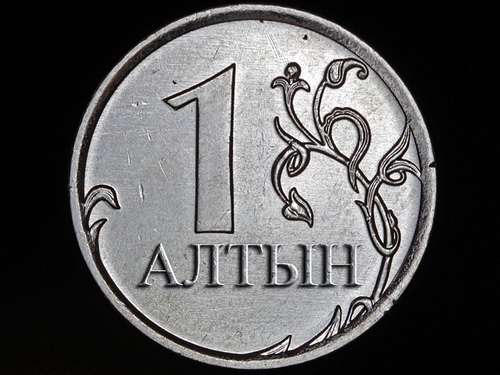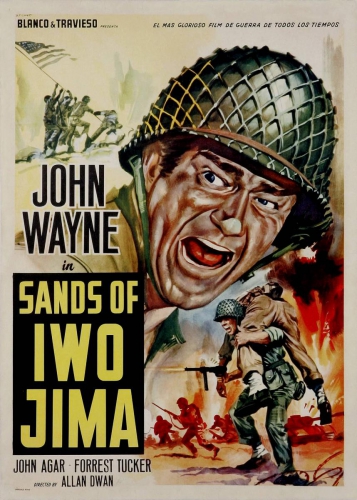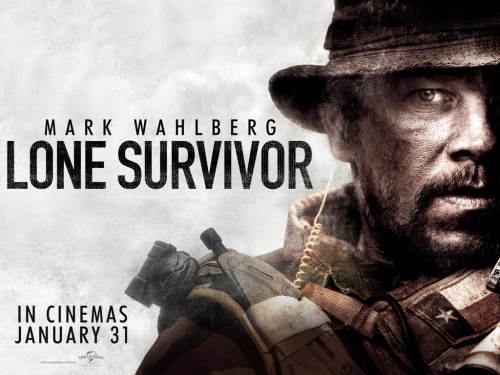mardi, 17 mars 2015
Report on the Jean Parvulesco Symposium Bucarest 2015
Report on the Jean Parvulesco Symposium Bucarest 2015
 Ex: http://www.openrevolt.info
Ex: http://www.openrevolt.info
A symposium on the French writer Jean Parvulesco led by Vlad Sauciuc and the Romanian branch office of the TV news channel Russia Today was held in the Hotel Crystal Palace of Bucharest on February 28th and 29th 2015.
From his Moscow apartment relayed via Skype, Alexander Dugin joined the symposium to share the memories of his friend Jean Parvulesco, whom he met in the late 1980s at the occasion of his first contacts with representatives of the French New Right. Alexander Dugin recognized the fact that the real identity of Jean Parvulesco will always remain a mystery, but added that if we were to try to define his true identity, he would think of a manifestation of the Celtic bard Talesin entrusted with a secret mission (undoubtedly in reference to Jean Parvulesco description of Julius Evola as a secret agent of the Holy Roman Emperor Frederick II). In his second conference, Alexander Dugin explained the core concepts of Jean Parvulesco’s geopolitical ideas, especially that of the eschatological Endkampf that would conclude centuries of occult warfare between the the Altantist order and the Eurasist order beyond the scene of world politics.
Natalia Melentiyeva, Alexander Dugin’s wife, joined the conference and, as a philosophy professor, introduced the key concepts of Neoplatonism, the true philosophia perennis common to most esoteric hermeneutics of the three monotheistic religions, in order to show how the philosophy of Plato and Plotinus can help deciphering the main themes of Jean Parvulesco’s novels. She also explain how each culture can be said to have its specific logos, which explains why each nation or ethnic ground needs to define its own Fourth Political Theory.
Jean Parvulsco’s son, Constantin Parvulsco, shed light on the mysteries of Jean Parvulesco early life: escape from the communist regime in Romania swimming across the Danube river, labor camp in Yugoslavia, escape and rescue from a mysterious virgin in Medjugorje, student life in Paris with the artistic avant-garde, armed struggle in Spain and Africa, mystical experiences, meetings with Ezra Pound, Julius Evola, Martin Heidegger, Mircea Eliade or Dominique de Roux, late literary career and militant involvement with the French New Right as well as various secret societies.
Stanislas Parvulesco, Jean Parvulesco’s grandson talked about the links between Eurasianism and South America with an inspiring speech on the resistance against globalization, and neo-liberal capitalism, with references to Peron and Chavez, as well as to the struggle of native American tribes to maintain their traditions.
As an expert on René Guénon and his Traditionalist school, Claudio Mutti talked about Jean Parvulesco’s friendship with other well-known Romanian figures, such as Jean Vâlsan, Vasile Lovinescu, Mirchea Eliade or Emil Cioran. His second speech was dedicated on Romanian sacred geography, with abundant references to Vasile Lovinescu’s book on the Hyperborean Dacia.
With his flamboyant style, Laurent James gave a very interesting speech on the influence of the French writer Dominique de Roux on Jean Parvulesco, followed by the recitation of a beautify people on Romania written by Dominique de Roux and most probably inspired or even written by Jean Parvulesco. Laurent’s second speech was fascinating compilation of Roman Catholic prophesies focused on Petrus Romanus, the last pope, who may herald the end of the papacy and a return of the Latin Church to Orthodoxy.
Finally, Alex Wyeth gave a first speech focused on Jean Parvulesco’s meetings with Julius Evola in 1968 to show that Jean Parvulesco could be seen as a true disciple of Julius Evola through three core themes that can serve as keys to decipher Jean Parvulesco’s cryptic novels, namely Tantrism (reinterpreted in a Western hermetic or Catholic frame), the Holy “Eurasianist” Empire and the Order of differentiated men leading the ultimate underground battle against the princes and principalities of dissolution. His second speech gave an example of the occult geopolitical influence of secret societies and their link to Eurasianism through the example of Martinism in Russia.
Many other fascinating topics have been discussed shedding light on Jean Parvulesco’s life and work from many different angles.
Beside conferences, the speakers have been received with the legendary hospitality of their Romanian friends, meeting fascinating people as diverse as representatives of Romanian parliament as well as the Russian embassy, Hesychasts inspired by René Guénon, National Bolshevik activists, legionaries of the Romanian Iron Guard, scholars and members of esoteric orders united by the mysterious figure of Jean Parvulesco as well as by the core principles of Eurasianism and Alexander Dugin’s Fourth Political Theory.
Alex Wyeth March 6, 2015 for OpenRevolt.info
00:05 Publié dans Jean Parvulesco | Lien permanent | Commentaires (0) | Tags : jean parvulesco, événement, bucarest, roumanie |  |
|  del.icio.us |
del.icio.us |  |
|  Digg |
Digg | ![]() Facebook
Facebook
Une Alliance stratégique Iran/Russie/Egypte est-elle possible?
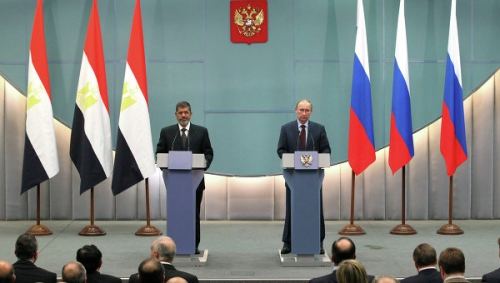
Une Alliance stratégique Iran/Russie/Egypte est-elle possible?
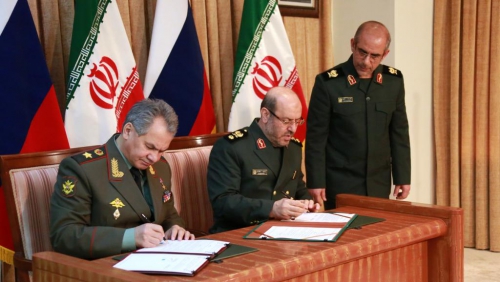
00:05 Publié dans Actualité, Affaires européennes, Géopolitique | Lien permanent | Commentaires (0) | Tags : russie, égypte, iran, europe, affaires européennes, afrique, affaires africaines, asie, affaires asiatiques, géopolitique, politique internationale |  |
|  del.icio.us |
del.icio.us |  |
|  Digg |
Digg | ![]() Facebook
Facebook
El 'Altyn', ¿un 'euro' para Eurasia?
Ex: http://www.elespiadigital.com
Una Zona Monetaria Común dentro de la Unión Económica Euroasiática (UEE) haría que la unión fuese aún más estable y económicamente atractiva, según un grupo de expertos citados por RIA Novosti.
La viabilidad de una moneda común para la unión compuesta por Rusia, Bielorrusia, Kazajistán y Armenia está siendo analizada por el Banco Central de Rusia en colaboración con el Gobierno, a instancias del presidente ruso, Vladímir Putin.
Se estima que el 1 de septiembre de este año estará listo el análisis para determinar si la unión monetaria en la UEE es un proyecto viable.
El año pasado en Kazajistán fueron firmados los documentos que prevén la creación para 2025 del Banco Euroasiático y la creación de una moneda única para Bielorrusia, Rusia y Kazajistán. "La situación política exterior puede haber influido en las decisiones económicas, y el presidente de Rusia ha decidido acelerar este proceso", señala el director del departamento de análisis de la empresa de servicios financieros Alpari, Alexander Razuvaev.
El experto asegura que la nueva moneda "puede entrar en vigor el 1 de enero de 2016", argumentando que "la política controla la economía". Sin embargo, hay quienes opinan que la transición debe hacerse de manera más pausada.
Un 'altyn' para Eurasia
La denominación provisional de la moneda única de Eurasia es 'altyn' (una moneda usada históricamente en Rusia y en varios países de la región), nombre que fue evocado en público por el presidente de Kazajistán, Nursultan Nazarbayev. Sin embargo, según algunos medios de comunicación también se estaría discutiendo el nombre de 'euraz'.
El Banco Central de la UEE, que se encargará de supervisar la política monetaria única, estará ubicado en Alma-Ata, antigua capital kazaja. "Solo que no será un análogo del Banco Central Europeo. Probablemente las decisiones serán tomadas de manera unánime por los jefes de Estado o por las directivas de los Bancos Nacionales de los países miembro", dice Razuvaev.
Se estima que la moneda única sea similar al rublo ruso y se sustente en las exportaciones de materias primas de Rusia y Kazajstán. El mercado potencial de circulación ronda los 180 millones de personas, sumando un volumen total del PIB de más de 2 billones de dólares.
Un paso lógico
Por un lado, la introducción de la moneda única en la UEE es un paso lógico en el marco de la coordinación económica, sostienen los expertos. "La moneda única es la última etapa de la integración monetaria", explica el director del Centro de Estudios de Integración del Banco Euroasiático de Desarrollo, Yevgeni Vinokurov.
La unión monetaria puede tener un impacto positivo en el desarrollo del mercado común en el marco de la UEE, tanto en términos de evitar el impacto de las fluctuaciones de las monedas de los países participantes, como también de la simplificación de los cálculos internos, dijo a RIA Novosti el director general del Centro de Comercio Internacional Vladímir Salamatov.
Según Vinokurov, las monedas de la UEE dependen de facto y en gran medida del rublo ruso. "Esta es, en nuestra opinión, una razón más para considerar la integración. Ya que, de todas formas, la tasa de cambio de sus monedas se basará en el rublo", explica. Y concluye preguntándose: "¿no será mejor hacer este mecanismo claro y ajustable?".
Periodo de configuración
La introducción de una moneda única no se puede hacer de la noche a la mañana. "Necesitamos un período suficientemente largo de ajuste. Se trata de coordinar las políticas monetarias y cambiarias, y de la coordinación mutua de las tasas de cambio de las monedas nacionales", agrega Vinokourov.
Una condición importante para el buen funcionamiento de la unión monetaria es una coordinación fiscal (en términos de legislación fiscal). Solo después de eso será posible la introducción de una moneda única y un único centro de emisión, resalta el experto.
La ministra para la Integración y la Macroeconomía de la UEE, Tatiana Válovaya, hizo un llamamiento este martes a los países miembros a no apresurarse, afirmando que primero es necesario crear un mercado único y luego hablar de la posibilidad de una moneda única. "Pero es necesario coordinar la política monetaria", concluyó.
Economistas: El mundo está al borde de una crisis monetaria sin precedentes
El fortalecimiento del dólar estadounidense, la "muerte" del euro y 74 billones de dólares en derivados sobre divisas, todo eso puede provocar la mayor crisis monetaria, advierten expertos.
El economista Michael Snyder opina que el fortalecimiento del dólar que se observa estas semanas "no es una buena noticia".
"Un dólar fuerte perjudica a las exportaciones estadounidenses, dañando así la economía del país. Además, la debilidad del dólar ha impulsado una fuerte expansión de los mercados emergentes de todo el mundo. Mientras el dólar se fortalece, se hace mucho más difícil para los países pedir prestado y pagar las deudas viejas", escribió en su artículo en el portal Infowars.
Por otra parte está el euro, que se encamina hacia mínimos históricos. La moneda europea se acerca a la paridad con el dólar y "finalmente caerá bajó el dólar", cree Snyder.
"Esto va a causar un gran dolor de cabeza en el mundo financiero. Los europeos tratan de resolver sus problemas económicos mediante la creación de enormes cantidades de dinero nuevo. Es la versión europea de la flexibilización cuantitativa, pero tiene efectos secundarios muy negativos", advierte el economista.
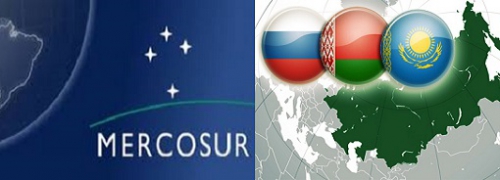
Análisis: Cómo el Mercosur y la Unión Euroasiática desafían a Estados Unidos y la hegemonía del dólar
Por Ariel Noyola Rodríguez
Las estrategias de contención económica promovidas por Washington en contra de Moscú y Caracas precipitaron la reconfiguración de alianzas en el sistema mundial. Es que aunque Rusia se localice geográficamente en el norte del hemisferio, su agenda diplomática guarda una mayor vinculación con las economías emergentes. Lo mismo sucede en relación a los países de América Latina, la región que de acuerdo con el canciller de Rusia, Serguéi Lavrov, está llamada a convertirse en un pilar clave en la construcción de un orden mundial multipolar.
Sin lugar a dudas, los nexos de Rusia con la región latinoamericana se profundizan de manera acelerada. Según la base de datos sobre comercio de mercancías de las Naciones Unidas (UN Comtrade, por sus siglas en inglés), los intercambios entre Moscú y América Latina alcanzaron una cifra récord de 18.832 millones de dólares en 2013, un monto 3 veces mayor en relación a 2004 (Brasil, Venezuela, Argentina, México y Ecuador son los 5 socios más importantes del oso ruso en América Latina).
Hay complementariedad económica en lo fundamental. Las exportaciones de Rusia hacia América Latina están concentradas en más de 50% en fertilizantes, minerales y combustibles. En tanto Moscú compra a los países latinoamericanos básicamente productos agrícolas, carnes y componentes electrónicos. De acuerdo con las proyecciones elaboradas por el Instituto de Latinoamérica de la Academia de Ciencias de Rusia, el comercio bilateral alcanzará los 100.000 millones de dólares el año 2030, un aumento de más de 500%.
Sin embargo, también hay múltiples desafíos en el horizonte. El contexto recesivo de la economía mundial, la tendencia deflacionaria (caída de precios) en el mercado de materias primas (en especial el petróleo), la desaceleración del continente asiático y las sanciones económicas impuestas por Estados Unidos y la Unión Europea, revelan la urgente necesidad de elevar los términos de la relación diplomática entre Rusia y los países latinoamericanos.
Como efecto de la caída del comercio entre Rusia y la Unión Europea, América Latina emerge de alguna manera como mercado sustituto y, al mismo tiempo, en calidad de receptora de inversiones de alta tecnología. En ese sentido, hay que destacar los proyectos de inversión del Consorcio Petrolero Nacional (conformado por Rosneft, Gazprom Neft, LUKoil, TNK-BP y Surgutneftegas) comprometidos con empresas de Brasil, Argentina, Venezuela, Guyana y Cuba, entre otros países.
Por añadidura, existe un amplio abanico de posibilidades para la construcción de alianzas científico-tecnológicas que por un lado, promuevan el desarrollo industrial de la región latinoamericana y, por otro lado, contribuyan a diversificar las exportaciones de Moscú, actualmente concentradas en los hidrocarburos.
El largo estancamiento de la actividad económica mundial, así como el aumento de la conflictividad interestatal por garantizar el suministro de materias primas fundamentales (petróleo, gas, metales, minerales, tierras raras, etcétera.) para la reproducción de capital, promueven la construcción de alianzas estratégicas a través de acuerdos de comercio preferenciales, inversiones conjuntas en el sector energético, transferencias tecnológicas, cooperación técnico-militar, etcétera.
Bajo esa misma perspectiva, la relación estratégica que Rusia mantiene con varios países latinoamericanos en el plano bilateral (Argentina, Brasil, Cuba, Ecuador, Nicaragua, Venezuela, etcétera.), busca ampliarse en la región sudamericana a través la Unión Euroasiática (conformada por Rusia, Bielorrusia, Kazajistán, Armenia y Kirguistán) como punta de lanza.
Es que si bien el presidente Vladimir Putin planteó en 2011 (en un artículo publicado en el periódico 'Izvestia') convertir la Unión Euroasiática en un mecanismo puente entre la región Asia-Pacífico y la Unión Europea, el cerco impuesto en contra de la Federación Rusa por la Organización del Tratado del Atlántico Norte (OTAN) canceló temporalmente esa posibilidad.
En consecuencia, la Unión Euroasiática rompe sus límites continentales a través de la creación de zonas de libre comercio con China en el continente asiático, Egipto en el Norte de África y el Mercado Común del Sur (Mercosur, conformado por Argentina, Brasil, Paraguay, Uruguay y Venezuela) en América Latina.
En los últimos años, la relación estratégica entre la Unión Euroasiática y el Mercosur representa la mayor apuesta de Rusia en la región sudamericana en materia de integración regional: ambos bloques poseen una extensión territorial de 33 millones de kilómetros cuadrados, una población de 450 millones de habitantes y un PIB combinado por encima de los 8,5 billones de dólares (11.6% del PIB mundial medido en términos nominales). La relación estratégica persigue dos objetivos generales. En primer lugar, disminuir la presencia de Estados Unidos y la Unión Europea en los flujos de comercio e inversión extrarregionales. Y en segundo lugar, acelerar el proceso de desdolarización global a través del uso de monedas nacionales como medios de liquidación.
La construcción de un sistema de pagos alternativo a la Sociedad para las Comunicaciones Interbancarias y Financieras Internacionales (SWIFT, por sus siglas en inglés) por parte de Rusia (China anunció recientemente el lanzamiento de un sistema de pagos propio, mismo que podría comenzar a funcionar el próximo mes de septiembre), así como la experiencia de América Latina sobre el Sistema Único de Compensación Regional (SUCRE) para amortiguar los shocks externos sobre el conjunto de la región, son evidencia del creciente protagonismo de ambas partes en la creación de instituciones y nuevos mecanismos financieros que abandonan la órbita del dólar.
Es indudable, frente a la embestida económica y geopolítica emprendida por el imperialismo norteamericano, que las economías emergentes eluden confrontaciones directas a través de la regionalización. De manera sucinta, la Unión Euroasiática y el Mercosur deberán enfocar sus esfuerzos hacia una mayor cooperación financiera y en paralelo, articular un frente común en defensa de la soberanía nacional y los principios del derecho internacional.
En conclusión, la relación estratégica entre la Unión Euroasiática y el Mercosur tiene una enorme oportunidad para presentar ante el mundo parte de la exitosa respuesta de ambos bloques a la profundización de la crisis económica actualmente en curso y, con ello, contribuir de manera decisiva a debilitar los cimientos de la hegemonía del dólar.
00:05 Publié dans Actualité, Eurasisme, Géopolitique | Lien permanent | Commentaires (0) | Tags : actualité, russie, union eurasiatique, eurasie, eurasisme, asie, affaires asiatiques, europe, affaires européennes, altyn, monnaie, devises, mercosur, dédollarisation |  |
|  del.icio.us |
del.icio.us |  |
|  Digg |
Digg | ![]() Facebook
Facebook
Nouvelle importance de la Mongolie
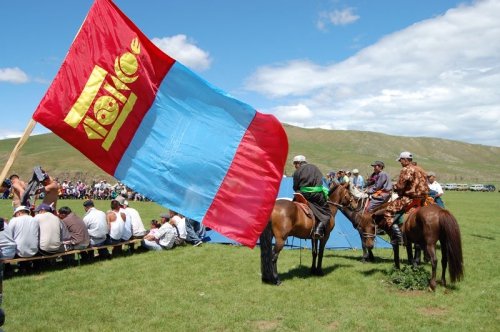
Nouvelle importance de la Mongolie
|
Le ministère français des affaires étrangères, quant à lui, dans ses « Conseils aux voyageurs », n'en donne pas une description très attrayante: « Pour tout déplacement en Mongolie, pays très étendu (trois fois la France) et faiblement peuplé (2,75 millions d'habitants), il est impératif de disposer d'un excellent contrat d'assurance maladie/rapatriement couvrant la totalité du séjour mongol et de vérifier si la compagnie d'assurance choisie dispose de correspondants administratifs et médicaux en Mongolie.I l est également indispensable de se munir des coordonnées précises de ces correspondants avant d'entreprendre le voyage, et de les conserver avec soi durant tout le séjour. » Il est vrai que se perdre dans le désert de Gobi peut légitimement faire peur.
Mais il s'agit d'une erreur. Aujourd'hui la Mongolie joue dans le monde un rôle important. Elle le doit d'abord à sa situation géographique qui la place au coeur de l'Asie, entre la Russie et la Chine et qui fait d'elle un point de passage essentiel pour les routes commerciales terrestres entre l'Europe et l'Asie-Pacifique. Elle dispose aussi d'importantes réserves minérales aujourd'hui considérées comme rares, cuivre, molybdène, étain, tungstène et or notamment. Mais elle doit également ce rôle à ce qu'elle a nommé la « third neighbour approach diplomacy». Ce terme désigne la volonté du pays de ne pas se limiter aux relations avec ses deux grands voisins, Chine et Russie, mais de rechercher des relations de bon voisinage avec des pays plus éloignés, Japon, Corée du Sud et Etats-Unis notamment. Pour le moment, il faut bien remarquer que l'Europe ne figure pas dans la priorité des « troisièmes voisins » à fréquenter. Aussi ouverte en théorie que soit la diplomatie mongole, elle a toujours refusé de s'inclure dans des alliances, militaires ou économiques, qui seraient dirigées contre la Chine et la Russie. Ceci n'a pas été cependant sans que les Etats-Unis s'y essayent à plusieurs reprises, ayant proposé à la Mongolie de créer sur son territoire un réseau de bases militaires analogue à celui mis en place dans une Europe plus docile. La Mongolie a cependant accepté de participer aux côtés des Etats-Unis aux guerres menées par ces derniers en Afghanistan et en Irak. De même ses experts militaires se joignent depuis 2006 à des manoeuvres communes dites « Khaan Quest » . Il existe dans la capitale, Oulan Bator, un centre dit d' « entrainement au maintien de la paix » ( Regional Peacekeeping Training Center ) financé par l'Amérique, dont le nom est tout un programme. En avril 2014, le secrétaire à la défense de l'époque, Chuck Hagel, avait déclaré que la Mongolie était pour l'Amérique un « partenaire stratégique ». Sur le plan économique, le gouvernement américian veille soigneusement à préserver les positions des deux principales entreprises minières anglo-américaines, American Peabody Energy Corporation et Rio Tinto Ltd. Tout ceci n'est pas sans inquiéter la Chine, car fidèle à sa politique de « défense des droits de l'homme et de la démocratie», la diplomatie américaine et ses services secrets ne cessent de susciter un sentiment anti-chinois dans la région autonome voisine de la Mongolie dite Uyghur Autonomous Region of the People's Republic of China (XUAR), laquelle abrite 9 millions de musulmans dont certains sont de plus en plus tentés par l'indépendance, quand ils ne fomentent pas en Chine même des attentats au nom d'un nouveau djihad à la mode asiatique.
La Mongolie et le BRICS Pour rééquilibrer les rapports de force, la Mongolie a décidé de renforcer ses relations avec la Russie. Ceci prendra une nouvelle actualité avec la mise en place des coopérations stratégiques et éventuellement militaires développées à l'initiative de cette dernière au sein du BRICS et de l'Organisation de Coopération de Shanghai (SCO). Dans ce cadre, à la suite d'une visite en début d'année du vice président de la Douma Sergei Naryshkin, la Mongolie a exprimé le désir que se mette en place à travers son territoire des branches terrestres de la Nouvelle Route de la Soie, décidée par la Chine et soutenue par la Russie. Il s'agira de construire des voies ferrées et des autoroutes, ainsi que des pipe-lines pour le gaz et le pétrole venant de Russie. Ce projet s'appellera « Route de la Steppe ». Il complétera la Route de la Soie et devrait permettre de développer une zone économique active. La Mongolie sera présente à la prochaine réunion du BRICS à Ufa et devrait devenir membre observateur au sein de la SCO Dans l'immédiat, contrairement à la volonté (honteuse) de non participation de ses homologues européens à la commémoration organisée en mai 2015 pour célébrer le 70e anniversaire de la victoire de l'URSS dans la Grande guerre patriotique, le président de la Mongolie Tsakhiagiin Elbegdorj sera présent au premier rang. Il aura l'occasion d'y rencontrer Vladimir Poutine, sans mentionner d'autres rencontres également envisagées. Rappelons une nouvelle fois ici que si l'Europe n'avait pas sur ordre de Washington, décidé de refuser pour le moment toutes les coopérations stratégiques dites euroBRICS, elle aurait pu reprendre un peu d'influence dans une partie du monde où elle est devenue pratiquement invisible. Notes |
00:05 Publié dans Actualité, Eurasisme, Géopolitique | Lien permanent | Commentaires (0) | Tags : actualité, asie, affaires asiatiques, eurasie, eurasisme, mongolie, brics, russie, chine |  |
|  del.icio.us |
del.icio.us |  |
|  Digg |
Digg | ![]() Facebook
Facebook
Entretien avec Slobodan Despot
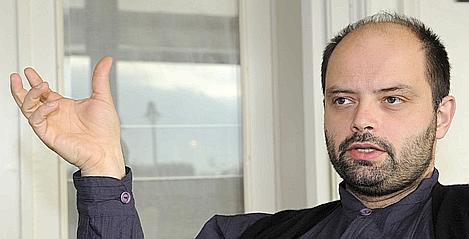
Slobodan Despot est écrivain et éditeur. Il a notamment publié Despotica en 2010 (Xenia) et Le miel en 2014 (Gallimard). Suisse d’origine serbe, il porte un intérêt tout particulier au monde slave. Nous avons discuté avec lui de la manière dont les médias, les politiques et les intellectuels occidentaux rendaient compte du conflit en Ukraine.
PHILITT : En 1999, l’OTAN et l’Occident ont déclenché une guerre au Kosovo en niant l’importance culturelle et historique de cette région pour le peuple serbe. Aujourd’hui, l’Occident semble ignorer l’importance de l’Ukraine pour le peuple russe. Avec 15 ans d’écart, ces deux crises géopolitiques ne sont-elles pas le symbole de l’ignorance et du mépris de l’Occident envers les peuples slaves ?
Slobodan Despot : La réponse est dans la question. On agit de fait comme si ces peuples n’existaient pas comme sujets de droit. Comme s’il s’agissait d’une sous-espèce qui n’a droit ni à un sanctuaire ni à des intérêts stratégiques ou politiques vitaux. Il y a certes des peuples slaves et/ou orthodoxes que l’OTAN traite avec une apparente mansuétude — Croates, Polonais, Roumains, Bulgares — mais uniquement à raison de leur docilité. On ne les méprise pas moins pour autant. Cependant, le traitement spécial réservé aux Russes et aux Serbes est motivé par leur insoumission à un ordre global dont l’Occident atlantique se croit à la fois le législateur et le gendarme. On peut déceler dans l’attitude occidentale vis-à-vis de ces deux nations des composantes indiscutables de ce qu’on appelle le racisme. Le journaliste suisse Guy Mettan publie d’ailleurs ce printemps une étude imposante et bienvenue sur la russophobie.
PHILITT : Comme l’explique Jacques Sapir, deux revendications légitimes se sont affrontées dans le cadre de la crise de Crimée : la liberté des peuples à disposer d’eux-mêmes et le respect de l’intégrité territoriale d’un État. Est-il possible, selon vous, de dépasser cette tension ?
Slobodan Despot : La Crimée fut arbitrairement rattachée, on le sait, à l’Ukraine par Khrouchtchev dans les années 50, à une époque où l’URSS semblait appelée à durer des siècles et où, du même coup, ses découpages intérieurs ne signifiaient pas grand-chose. L’éclatement de l’Empire a soulevé de nombreux problèmes de minorités, d’enclaves et de frontières inadéquates. La Crimée est non seulement une base stratégique de premier plan pour la Russie, mais encore une terre profondément russe, comme elle l’a montré lors de son référendum de mars 2014. Les putschistes de Kiev, sûrs de la toute-puissance de leurs protecteurs occidentaux, ont oublié de prévoir dans leur arrogance que leur renversement de l’ordre constitutionnel allait entraîner des réactions en chaîne. Or, non seulement ils n’ont rien fait pour rassurer les régions russophones, mais encore ils ont tout entrepris pour que celles-ci ne songent même plus à revenir dans le giron de Kiev.
De toute façon, le rattachement de la Crimée n’est, on l’oublie trop vite, que la réponse du berger russe à la bergère américaine, qui a jugé bon en 1999 de détacher à coup de bombes le Kosovo de la Serbie. Le bloc atlantique et ses satellites ont par la suite reconnu cet État mort-né malgré l’existence d’une résolution de l’ONU (n° 1244) affirmant clairement la souveraineté de la Serbie sur cette province. C’est au Kosovo qu’a eu lieu la violation du droit international qu’on dénonce en Crimée.
PHILITT : Concernant le conflit ukrainien, chaque camp dénonce l’action d’agents d’influence en tentant de minimiser la spontanéité des événements. Quelle est la part de réalité et de fantasme de cette lecture géopolitique ?
Slobodan Despot : Je rappellerai un cas d’école très peu connu. Toute la Crimée se souvient d’un incident gravissime survenu au lendemain du putsch de Maïdan, lorsque des casseurs néonazis bien coordonnés ont arrêté sur l’autoroute une colonne de 500 manifestants criméens revenant de Kiev, mitraillé et incendié leurs autocars, tabassé et humilié les hommes et sommairement liquidé une dizaine de personnes. Les médias occidentaux ont totalement occulté cet épisode. Comme il s’agissait de faire passer le référendum criméen pour une pure manipulation moscovite, il était impossible de faire état de cet événement traumatique survenu moins d’un mois avant le vote.
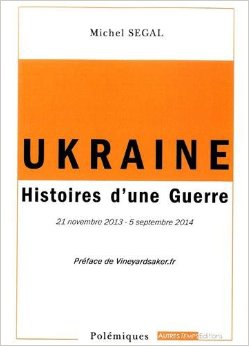 Les exemples de ce genre sont légion. Le livre très rigoureux du mathématicien français Michel Segal, Ukraine, histoires d’une guerre (éd. Autres Temps), en décompose un certain nombre en détail. Il faut reconnaître que le camp « occidentiste » a l’initiative de la « propagande contre la propagande », c’est-à-dire de la montée en épingle d’opérations d’influence supposées. Il jouit en cela d’une complaisance ahurissante des médias occidentaux. Or, dans un conflit comme celui-là, où tous les protagonistes sortent des écoles de manipulation soviétiques, les chausse-trapes sont partout et seul un jugement fondé sur la sanction des faits avérés et sur la question classique « à qui profite le crime ? » permettrait d’y voir clair. Nous en sommes loin ! Le plus cocasse, c’est que l’officialité nous sert à journée faite des théories du complot russe toujours plus échevelées tout en condamnant le « complotisme » des médias alternatifs …
Les exemples de ce genre sont légion. Le livre très rigoureux du mathématicien français Michel Segal, Ukraine, histoires d’une guerre (éd. Autres Temps), en décompose un certain nombre en détail. Il faut reconnaître que le camp « occidentiste » a l’initiative de la « propagande contre la propagande », c’est-à-dire de la montée en épingle d’opérations d’influence supposées. Il jouit en cela d’une complaisance ahurissante des médias occidentaux. Or, dans un conflit comme celui-là, où tous les protagonistes sortent des écoles de manipulation soviétiques, les chausse-trapes sont partout et seul un jugement fondé sur la sanction des faits avérés et sur la question classique « à qui profite le crime ? » permettrait d’y voir clair. Nous en sommes loin ! Le plus cocasse, c’est que l’officialité nous sert à journée faite des théories du complot russe toujours plus échevelées tout en condamnant le « complotisme » des médias alternatifs …
PHILITT : Dans la chaîne causale qui va de la mobilisation « humanitaire » jusqu’à l’intervention militaire, quelle est la place exacte des intellectuels qui l’approuvent ? Sont-ils de simples rouages ?
Slobodan Despot : Les intellectuels ont joué me semble-t-il un rôle bien plus important dans cet engrenage au temps de la guerre en ex-Yougoslavie. J’ai conservé les articles des BHL, Jacques Julliard, Glucksmann, Deniau etc… On a peine à croire, vingt ans plus tard, que des gens civilisés et hautement instruits aient pu tomber dans de tels états de haine ignare et écumante. Même le bon petit abbé Pierre, saint patron des hypocrites, avait appelé à bombarder les Serbes ! J’ai également conservé les écrits de ceux qui, sur le moment même, avaient identifié et analysé cette dérive, comme l’avait fait Annie Kriegel.
Aujourd’hui, à l’exception burlesque de Lévy, les intellectuels sont plus en retrait. Ils vitupèrent moins, mais s’engagent moins également pour la paix. Mon sentiment est que leur militantisme crétin au temps de la guerre yougoslave les a profondément décrédibilisés. Leur opinion n’intéresse plus personne. Du coup, dans l’actualité présente, le rôle des agents d’influence ou des idiots utiles est plutôt dévolu à d’obscurs « experts » académico-diplomatiques, souvent issus d’ONG et de think tanks plus ou moins liés à l’OTAN. Ces crustacés-là supportent mal la lumière du jour et abhorrent le débat ouvert. Il est caractéristique qu’Alain Finkielkraut ait dû me désinviter de son Répliques consacré à l’Ukraine suite à la réaction épouvantée d’un invité issu de ce milieu à la seule mention de mon nom. À quoi leur servent leurs titres et leurs « travaux » s’ils ne peuvent endurer un échange de vues avec un interlocuteur sans qualification universitaire ?
PHILITT : Bernard-Henri Lévy compare, dès qu’il en a l’occasion, Vladimir Poutine à Hitler ou encore les accords de Minsk à ceux de Munich signés en 1938. Cette analyse possède-t-elle une quelconque pertinence ou relève-t-elle de la pathologie ?
Slobodan Despot : M. Lévy a un seul problème. Il n’a jamais su choisir entre sa chemise immaculée et la crasse du monde réel. Il se fabrique des causes grandiloquentes à la mesure de sa peur et de sa solitude de garçon mal aimé errant dans des demeures vides qu’il n’a jamais osé abandonner pour mener la vraie vie selon l’esprit à laquelle il aspirait. Je le vois aujourd’hui mendier la reconnaissance par tous les canaux que lui octroie son immense fortune — journalisme, roman, reportage, théâtre et même cinéma — et ne recueillir que bides et quolibets. Et je l’imagine, enfant, roulant des yeux de caïd mais se cachant au premier coup dur derrière les basques de son père ou de ses maîtres. Dans mes écoles, on appelait ces fils-à-papa cafteurs des « ficelles » et nul n’était plus méprisé que ces malheureux-là. Aussi, lorsque j’entends pérorer M. Lévy, je ne pense jamais à l’objet de sa harangue, mais à l’enfant en lui qui m’inspire une réelle compassion.
PHILITT : Vous écriviez, pour annoncer une conférence qui s’est tenue à Genève le 25 février : « On a vu se mettre en place une « narratologie » manichéenne qui ne pouvait avoir d’autre dénouement que la violence et l’injustice. Si l’on essayait d’en tirer les leçons ? » Le storytelling est-il devenu la forme moderne de la propagande ?
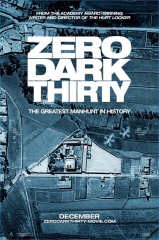 Slobodan Despot : C’est évident. Il se développe en milieu anglo-saxon (et donc partout) une véritable osmose entre l’écriture scénaristique et l’écriture documentaire. Cas extrême : le principal « document » dont nous disposions sur l’exécution supposée de Ben Laden en 2011 est le film de Kathryn Bigelow, Zero Dark Thirty, qui a tacitement occupé dans la culture occidentale la place du divertissement et de l’analyse, et de la preuve. La réussite cinématographique de ce projet (du reste dûment distinguée) a permis d’escamoter toute une série d’interrogations évidentes.
Slobodan Despot : C’est évident. Il se développe en milieu anglo-saxon (et donc partout) une véritable osmose entre l’écriture scénaristique et l’écriture documentaire. Cas extrême : le principal « document » dont nous disposions sur l’exécution supposée de Ben Laden en 2011 est le film de Kathryn Bigelow, Zero Dark Thirty, qui a tacitement occupé dans la culture occidentale la place du divertissement et de l’analyse, et de la preuve. La réussite cinématographique de ce projet (du reste dûment distinguée) a permis d’escamoter toute une série d’interrogations évidentes.
Sur ce sujet du storytelling, nous disposons d’une enquête capitale. En novembre 1992, Élie Wiesel emmena une mission en Bosnie afin d’enquêter sur les « camps d’extermination » serbes dénoncés par la machine médiatique cette année-là. Ayant largement démenti cette rumeur, la mission Wiesel fut effacée de la mémoire médiatique. Par chance, il s’y était trouvé un homme de raison. Jacques Merlino, alors directeur des informations sur France 2, fut outré tant par l’excès de la campagne que par l’escamotage de son démenti. Il remonta jusqu’à l’agence de RP qui était à la source du montage. Son président, James Harff, lui expliqua fièrement comment il avait réussi à retourner la communauté juive américaine pour la convaincre que les victimes du nazisme de 1941 étaient devenues des bourreaux nazis en 1991. Il ne s’agissait que d’une story, d’un scénario bien ficelé. La réalité du terrain ne le concernait pas.
Les stories simplistes de ce genre ont durablement orienté la lecture de cette tragédie. Ceux qui s’y opposaient, fût-ce au nom de la simple logique, étaient bâillonnés. Le livre de Merlino, Les vérités yougoslaves ne sont pas toutes bonnes à dire (Albin Michel), fut épuisé en quelques semaines et jamais réimprimé, et son auteur « récompensé » par un poste… à Pékin !
PHILITT : Comment expliquer la faible mémoire des opinions occidentales ? Comment expliquer qu’elles aient « oublié » les preuves qui devaient être apportées de l’implication russe dans la destruction du MH-17 ? Le storytelling remplace-t-il, dans l’esprit du public, la causalité mécanique par une causalité purement morale ?
Slobodan Despot : Nous vivons en effet dans une époque hypermorale — ou plutôt hypermoralisante. L’identification des faits est subordonnée à l’interprétation morale qui pourrait en découler. Si, par exemple, voir des « jeunes » molester une gamine devant votre immeuble risque de vous inspirer des pensées racistes et sécuritaires, vous êtes prié de ne pas constater l’altercation et de passer votre chemin. C’est très vil au point de vue de la moralité individuelle, mais correct selon la moralité sociétale. Une même « école du regard » a été imposée au sujet de la Russie. Au lendemain de la tragédie du vol MH-17, la sphère politico-médiatique s’est mise à conspuer le président russe en personne comme s’il avait abattu l’avion de ses propres mains. Aujourd’hui, plus personne n’en souffle mot, le faisceau d’indices étant accablant pour le camp adverse. Ces dirigeants et ces personnalités publiques disposent de suffisamment de jugeote et de mémoire pour mener rondement et même cyniquement leurs propres affaires. Mais dans un contexte impliquant l’intérêt collectif, comme la guerre contre la Russie, ils abandonnent tout sens de la responsabilité et du discernement et se comportent comme des midinettes hyperventilées. Leur tartufferie n’est même plus un vice, mais une composante anthropologique. Ils réalisent le type humain totalement sociodépendant que le nazisme et le communisme ont tenté de mettre en place avant d’être coupés dans leur élan.
00:05 Publié dans Actualité, Affaires européennes, Entretiens, Géopolitique, Manipulations médiatiques | Lien permanent | Commentaires (0) | Tags : slobodan despot, entretien, balkans, ex-yougoslavie, ukraine, bhl, alain finkielkraut, bernard-henri lévy, europe, affaires européennes, politique internationale, manipulations médiatiques |  |
|  del.icio.us |
del.icio.us |  |
|  Digg |
Digg | ![]() Facebook
Facebook
The ISIS-US Empire – Their Unholy Alliance Fully Exposed
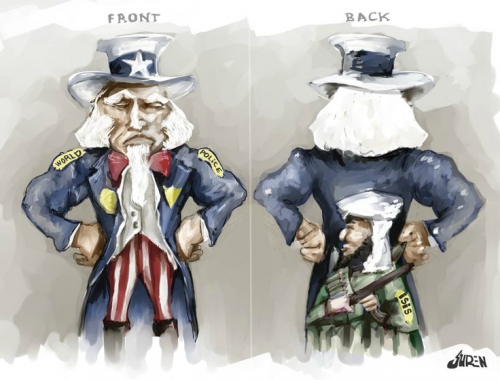
The ISIS-US Empire – Their Unholy Alliance Fully Exposed
By Joachim Hagopian
GlobalResearch.ca
Ex: http://www.lewrockwell.com
Let’s be perfectly clear. The United States is not actually at war with ISIS. As Global Research director, economist and author Michel Chossudovsky plainly points out recently, Obama is simply waging “a fake war” against the Islamic State forces, putting on another propaganda show for mainstream media to keep his flock of American sheeple asleep in echo-chambered darkness. With a mere cursory review of recent historical events, one can readily realize that virtually everything Big Government tells us is happening in the world, you can bet is a boldface lie.
For over three and a half decades the US has been funding mostly Saudi stooges to do its dirty bidding in proxy wars around the world, beginning in Afghanistan in the 1980’s to fight the Soviets with the mujahedeen-turned al Qaeda that later would mutate into ISIS. Reagan and Bush senior gave Osama bin Laden his first terrorist gig. Our mercenary “Islamic extremists” for-hire were then on the CIA payroll employed in the Balkans during the 1990’s to kill fellow Moslem Serbs in Kosovo and Bosnia. For a long time now Washington’s been relying on the royal Saudi family as its chief headhunters supplying the United States with as needed terrorists on demand in order to wage its geopolitics chessboard game of global hegemony, otherwise known by the central banking cabal as global “Theft-R-Us.”
The Bush crime family were in bed with the bin Ladens long before 9/11 when that very morning George H W Bush on behalf of his Carlyle Group was wining and dining together with Osama’s brother at the posh DC Ritz Carlton while 19 box cutting Saudi stooges were acting as the neocon’s hired guns allegedly committing the greatest atrocity ever perpetrated on US soil in the history of this nation. And in the 9/11 immediate aftermath while only birds were flying the not-so-friendly skies above America, there was but one exception and that was the Air Force escort given the bin Ladens flying safely back home to their “Terrorists-R-Us” mecca called Saudi Arabia. On 9/11 the Zionist Israeli Mossad, Saudi intelligence and the Bush-Cheney neocons were busily pulling the trigger murdering near 3000 Americans in cold blood as the most deadly, most heinous crime in US history. If you’re awake enough to recognize this ugly truth as cold hard fact, then it’s certainly not a stretch to see the truth behind this latest US created hoax called ISIS.
Renowned investigative journalist and author Seymour Hersh astutely saw the writing on the wall way back in 2006 (emphasis added):
To undermine Iran, which is predominantly Shiite, the Bush Administration has decided, in effect, to reconfigure its priorities in the Middle East. In Lebanon, the Administration has cooperated with Saudi Arabia’s government, which is Sunni, in clandestine operations that are intended to weaken Hezbollah, the Shiite organization that is backed by Iran. The U.S. has also taken part in clandestine operations aimed at Iran and its ally Syria. A by-product of these activities has been the bolstering of Sunni extremist groups that espouse a militant vision of Islam and are hostile to America and sympathetic to Al Qaeda.
The US Empire along with its international partner-in-crime Israel has allowed and encouraged Saudi Arabia, Qatar and the United Arab Emirates to be the primary financiers of al Qaeda turned ISIS. Even Vice President Joe Biden last year said the same. If Empire wanted to truly destroy the entire Islamic extremist movement in the Middle East it could have applied its global superpower pressure on its allied Gulf State nations to stop funding the ISIS jihadists. But that has never happened for the simple reason that Israel, those same Arab allies and the United States want a convenient “bad guy” enemy in the Middle East and North Africa, hiding the fact that al Qaeda-ISIS for decades has been its mercenary ally on the ground in more recent years in the Golan Heights, Libya, Iraq and Syria.
As recently as a month ago it was reported that an Islamic State operative claimed that funding for ISIS had been funneled through the US. Of course another “staunch” US-NATO ally Turkey has historically allowed its territory to be a safe staging ground as well as a training area for ISIS. It additionally allows jihadist leaders to move freely in and out of Syria through Turkey. Along with Israel and all of US Empire’s Moslem nation states as our strategic friends in the Middle East, together they have been arming, financing and training al Qaeda/ISIS to do its double bidding, fighting enemies like Gaddafi in Libya and Assad in Syria while also posing as global terrorist boogie men threatening the security of the entire world. Again, Washington cannot continue to double speak its lies from both sides of its mouth and then expect to continue having it both ways and expect the world to still be buying it.
A breaking story that’s creating an even larger crack in the wall of the US false narrative is the revelation that Iraqi counterterrorism forces just arrested four US-Israeli military advisors assisting (i.e., aiding and abetting) the ISIS enemy, three of whom hold duel citizenships from both Israel and America. This latest piece of evidence arrives on the heels of a Sputnik article from a couple weeks ago quoting American historian Webster Tarpley saying that “the United States created the Islamic State and uses jihadists as its secret army to destabilize the Middle East.” The historian also supported claims that the ISIS has in large part been financed by the Saudi royal family. Interviewed on Press TV the critic of US foreign policy asked why NATO ally Turkey bordering both Iraq and Syria where the Islamic State jihadists continue to terrorize, why can’t Turkey simply use its larger, vastly superior army to go in and defeat the much smaller ISIS, especially if the US and NATO were serious about destroying their alleged enemy. Again, if ISIS is the enemy, why did the US recently launch an air strike on Assad’s forces that were in process of defeating ISIS? The reason is all too obvious, the bombing was meant to afflict damage to stop Assad’s forces from beating back ISIS that the US is clearly protecting.
Finally, Tarpley reaffirmed what many others have been saying that chicken hawk Senator John McCain is actual buddies with ISIS kingpin Abu Bakr al-Baghdadi. Of course photos abound of his frequent “secret” meetings with ISIS leadership illegally conducted inside Syria. This confirmed fact provides yet one more obvious link between the high powered criminal operative posing as US senator and the so called enemy of the “free world” ISIS.
Recall that iconic photo from June last year of American supplied trucks traveling unimpeded in the ISIS convoy kicking up dust in the Iraqi desert fresh from the Syrian battlefields heading south towards Baghdad. It was no accident that they were equipped with an enormous fleet of brand new Toyota trucks and armed with rockets, artillery and Stinger missiles all furnished by US Empire. Nor was it an accident that the Iraqi Army simply did an about face and ran, with orders undoubtedly coming from somewhere high above in the American Empire. The Islamic State forces were allowed to seize possession of 2500 armored troop carriers, over 1000 Humvees and several dozen US battlefield tanks all paid for by US tax dollars. This entire spectacle was permitted as ISIS without any resistance then took control of Mosul the second largest city in Iraq including a half billion dollars robbing a bank. Throughout this process, it was definitely no accident that the United States allowed the Islamic State forces to invade Iraq as with advanced US airpower it could have within a couple hours easily carpet bombed and totally eliminated ISIS since the Islamic State possessed no anti-aircraft weapons. And even now with the hi-tech wizardry of satellites, lasers, nanotechnology and advanced cyber-warfare, the US and allied intelligence has the means of accurately locating and with far superior firepower totally eradicating ISIS if the will to do so actually existed. But the fact is there is no desire to kill the phantom enemy when in fact it’s the friend of the traitors in charge of the US government who drive the Empire’s global war policy.
Washington’s objective last year was to purposely unleash on already ravaged Iraq the latest US-made, al Qaeda morphed into the Islamic monster-on-steroids to further destabilize the Middle East, seek a regime change to replace the weak, corrupt, Sunni persecuting Maliki government in Baghdad and ‘balkanize” Iraq into three separate, powerless, divisive sections in similar vein of how the West tore apart and dissected Yugoslavia into thirteen ineffectual pieces. The globalist pattern of bank cabal loans drowning nations into quicksand debt and transnationals and US Empire posts predatorily moving in as permanent fixtures always replace what was previously a far better off sovereign nation wherever King Midas-in-reverse targets to spreads its Empire disease of failed-state cancer. After Yugoslavia came Iraq, Afghanistan, Libya, Syria, Yemen and Ukraine. It goes on and on all over the globe. The all too familiar divide and conquer strategy never fails as the US Empire/NWO agenda. But the biggest reason ISIS was permitted to enter and begin wreaking havoc in Iraq last June was for the Empire to re-establish its permanent military bases in the country that Maliki had refused Washington after its December 2011 pullout.
With 2300 current US troops (and rising up to 3000 per Obama’s authorization) once again deployed back on the ground in Iraq acting as so called advisors, Iraq is now the centerpiece of US military presence in the Middle East region. Before a doubting House Armed Services Committee last Tuesday, CENTCOM Commander General Lloyd Austin defended Obama’s policyinsisting that ISIS can be defeated without use of heavy ground forces, feebly claiming that they’re on the run because his commander-in-chief’s air strike campaign is actually working. How many times before have we heard generals’ glowing reports to Congress turn out to be lies?
As far as PR goes, it appears the lies and propaganda are once again working. With help from the steady stream of another beheading-of-the week posted like clockwork on Youtube for all the world to shockingly see, not unlike when traffic slows down to look for bloodied car victims mangled on the highway. Apparently this thinly veiled strategy is proving successful again on the worked over, dumbed down, short attention-spanned American population. According to a poll released just a few days ago, 62% of Americans want more GI boots on the ground in Iraq to fight the latest made-by-America enemy for Iraq War III. Incredibly only 39% believe that more troops on the ground would risk another long, protracted war. Again, short attention spans are doomed to keep repeating history as in Vietnam, Iraq and Afghanistan.
This polling propaganda disinformation ploy fits perfectly with prior statements made a few months ago by America’s top commander General Martin Dempsey that the US military presence in both Iraq and Syria must be a long term commitment as the necessary American sacrifice required to effectively take out ISIS. With US leaders laying the PR groundwork for more Empire occupations worldwide, of course it’s no accident that it conveniently fits in with the Empire’s agenda to wage its war of terror on a forever basis. Efforts by Washington to “prep” Americans for these “inevitable,” open-ended wars around the globe are designed to condition them into passive acceptance of lower intensity, “out-of-sight, out-of-mind” conflicts specifically to minimize and silence citizens from ever actively opposing yet more human slaughter caused by more US state sponsored terrorism in the form of unending imperialistic wars.
Every one of these “current events” have been carefully planned, coordinated, timed and staged for mass public consumption, none more so than those beheadings of US and British journalists, aid workers and Middle Eastern Christians along with the desecration of ancient Iraqi history with dozens of destroyed museums, churches and shrines. Obama and the Empire want us all to be thoroughly horrified and disgusted so we fear and hate the latest designated Islamic enemy. Hating your enemy to the point of viewing them as the lowest of the lowest, sub-human animal is an old psyops brainwashing trick successfully employed in every single war from the dawn of violent man. It effectively dehumanizes the enemy while desensitizing the killing soldier. For over a year now we’ve seen this same MSM game being relentlessly waged to falsely demonize Putin. The sinister, warped minds of the divide and conquer strategists from the ruling class elite don’t mind the resultant hating of Moslems around the world either. That’s all by diabolical design too.
If only six organizations control the entire planet’s mass media outlet that feeds the masses their daily lies like their daily bread, another winning bet would be that in a heartbeat they could also effectively shut down the internet pipeline that showcases ISIS horror show theatrics on the global stage. But by design, they are willingly, cunningly disseminated for worldwide mass consumption.
In fact the only consistent group that’s even been able to militarily hold their own and actually challenge ISIS, the Kurds, are watching UK ship heavy arms to the same losing team the Iraqi army that ran away from defending Mosul. The last time the West gave them weapons and supplies, they handed them right over to ISIS.
In a recent Guardian article, a Kurdish captain said that the Kurds offered to even buy the second hand weapons from the British used in Afghanistan. But because the West is afraid the heavy arms might empower Kurdish nationalism into demanding their own sovereign nation for the first time in history, the US wants to ensure that Iraq stays as one nation after implanting its latest Baghdad puppet regime. The fiercely independent Kurds are feared if they were granted autonomy that they might refuse to allow their homeland to be raped and plundered by the US unlike the corrupt current Iraqi government. The Kurdish fighters could sorely use the bigger guns as they plan to launch an offensive in April or May to take back Mosul from ISIS. But when permitting an ancient ethnic group its proper due by granting political autonomy risks interfering with the Empire’s rabid exploitation of another oil-rich nation, all bets are off in doing the right thing.
The mounting evidence is stacking up daily to unequivocally prove beyond any question of a doubt that ISIS is in fact a US mercenary ally and not the treasonous feds’ enemy at all. From mid-August 2014 to mid-January 2015 using the most sophisticated fighter jets known to man, the US Air Force and its 19 coalition allies have flown more than 16,000 air strikes over Iraq and Syria ostensibly to “root out” ISIS once and for all. Yet all this Empire aggression has nothing to show for its wasted phony efforts as far as inflicting any real damage on the so called ISIS enemy. Labeled a “soft counterterrorism operation,” a prominent Council on Foreign Relations member recently characterized Obama’s scheme as too weak and ineffectual, and like a true CFR chicken hawk, he strongly advocates more bombs, more advisers and special operations forces deployed on the ground.
But the records show that all those air strikes are purposely not hitting ISIS forces because they are not the actual target. Many air strike missions from both the US Air Force as well as Israeli jets have been designed to destroy extensive infrastructure inside Syria that hurts the Syrian people, causing many innocent civilian casualties, while not harming ISIS at all. This in turn ensures more ISIS recruits for America’s forever war on terror. Repeatedly oil refineries, pipelines and grain storage silos have also been prime targets damaged and destroyed by the West. Because in 2013 Obama’s false flag claim that Assad’s army was responsible for the chemical weapons attack was thwarted by strong worldwide opposition and Putin’s success brokering the deal that had Assad turning over his chemical weapons, a mere year later ISIS conveniently provided Obama’s deceitful excuse to move forward with his air offensive on Syria after all.
Finally, on numerous occasions the US was caught red-handed flying arms and supply drops to the Islamic jihadists on the ground. According to Iraqi intelligence sources, US planes have engaged regularly in air drops of food and weapons to ISIS. These sighting began to be observed after one load was “accidentally” dropped last October into so called enemy hands supposedly meant to go to the Kurdish fighters. Realizing the US has betrayed them, as of late Iraqi security forces have been shooting down US and British aircraft engaged in providing supplies and arms to their ISIS enemy. This is perhaps the most incriminating evidence yet in exposing the truth that ISIS is being supported, supplied and protected by the US Empire more than even the Iraqi government forces the US claims to be assisting in this phony war against the militant Islamic jihadists.
Clearly the unfolding daily events and developments in both Iraq and Syria overwhelmingly indict the United States as even more of “the bad guy” than the supposed ISIS terrorists. Recently the US was caught financing ISIS and has all along supported Arab allies that knowingly fund Islamic extremism. During the six months since Obama vowed to go after them and “root them out,” countless times the US and allies have maintained the so called enemy’s supply line with regularly scheduled air drops. Meanwhile, in both Syria and Iraq after a half year of alleged bombing, ISIS forces are reported to be stronger than ever. The air strikes have not been hitting jihadist targets because the American and coalition forces’ actual targets in Syria have been vital infrastructure and civilians that are clearly attacks on Assad. All of this irrefutable evidence piling up is backfiring on the American Empire. The world is now learning just how devious, diabolical and desperate the warmongering, pro-Zionist powerbrokers who are the war criminals controlling the US rogue government really are. Their evil lies are unraveling their demonic agenda as the truth cannot be stopped.
Reprinted with permission from GlobalResearch.ca.
00:05 Publié dans Actualité, Géopolitique | Lien permanent | Commentaires (0) | Tags : politique internationale, géopolitique, isis, daech, eiil, syrie, levant, proche orient, djihadisme, monde arabe, monde arabo-musulman, états-unis, géostratégie |  |
|  del.icio.us |
del.icio.us |  |
|  Digg |
Digg | ![]() Facebook
Facebook
Lugan aux Ronchons!
00:05 Publié dans Actualité, Evénement, Livre, Livre | Lien permanent | Commentaires (0) | Tags : événement, paris, france, bernard lugan, afrique, affaires africaines, politique internationale, livre |  |
|  del.icio.us |
del.icio.us |  |
|  Digg |
Digg | ![]() Facebook
Facebook
Jardiner le monde

Michel Lhomme
Ex: http://metamag.fr
Quelle différence entre le droit coutumier des peuples menacés et le droit de la mondialisation fondé sur le droit occidental ? Dans le droit romain, l'homme est propriétaire de la terre. Chez les Amérindiens ou les Mélanésiens, la terre est propriétaire des hommes.
Dans toutes les communautés naturelles menacées aujourd'hui par la mondialisation, que ce soit en Amérique du Sud, chez les Papous ou à Wallis, la prétendue propriété de la terre est le cœur du problème. La propriété de la terre est-elle individuelle ou collective ? Doit-on jouir de la terre ensemble ou solitairement ? Le modèle de la mondialisation économique prône la ''maison'', le home sweet home, el dulce hogar, le silence du privé. De la propriété collective de la terre surgit l'indivision. Dans le conflit mapuche du Chili , par toutes les soustractions de terrain opérées durant le conflit entre droit coutumier et droit néocolonial, les familles ne disposent plus que de micro-terres, à peine quelques arpents sur lesquels elles tentent de subsister. Souvent, elles n'y parviennent pas ou tout juste. Un chef mapuche tenait de son grand-père une bonne quantité de terres : c'est à peine si aujourd'hui, il lui reste un hectare ! Et pourtant, de cet unique hectare qui lui reste, le reste de la communauté l'envie : les autres n'ont carrément plus rien !

Elles sont en effet devenues rares les familles mapuches qui, après trois générations conservent encore une bonne quantité de terres, une quantité disons significative qui irait au-delà de la bicoque et du petit jardin. Mais le problème foncier n'est pas qu'une question d'appauvrissement.
En fait, la plus grande partie des sociétés du monde tirent leur origine des terres agricoles. Or, les communautés orientées vers la terre se font de plus en plus rares et elles perdent en général leurs ''propriétés''. En fait, les vieilles communautés agricoles d'autrefois n'ont rien à voir avec les grandes fermes de la Beauce ou de la Haute Marne. On touche là à un autre usage de la terre, quelque chose de profondément différent du monde du commerce agricole ou de l'agro industrie. Ainsi, la France, terre paysanne par excellence a vu petit à petit disparaître ces petites fermettes et ces vieux métayers. Le monde agricole n'est plus, la paysannerie indienne si chère à Gandhi s'estompe et meurt peu à peu à coups de suicides de paysans surendettés. Partout où une civilisation meurt, c'est que la culture agricole s'éteint. De fait, il y a deux caractéristiques globales essentielles à la mondialisation : les nouvelles technologies et l'urbanisation. C'est la fin du monde paysan et des traditions paysannes, c'est le règne des mégapoles africaines.
Du coup, dans les derniers groupements paysans ou traditionnels, la terre cultivée depuis des siècles ne nourrit même plus son petit monde. Les réformes agraires des années 60-80 tentèrent dans de nombreuses régions du globe de solutionner le problème foncier mais elles échouèrent toutes dans l'imposition d'un modèle néo-marxiste de collectivisation forcée, un modèle coopératif importé en rupture avec la coutume.
Dans toutes les sociétés modernes, contrairement aux illusions communistes des anthropologues du début du vingtième siècle, la propriété collective des moyens de production - quelque chose de foncièrement différent en fait du communautarisme et du solidarisme traditionnel ou spontané - dynamita le foncier et fit de la terre nouvellement et arbitrairement distribuée les derniers lopins d'une survie programmée. De fait, les réformateurs agraires propulsèrent leurs réformes par la violence systémique, menant au nom de la lutte des classes et de l'égalité fictive une guérilla armée avec l'objectif inavoué mais bien réel de déplacer les populations récalcitrantes au son martial des chants révolutionnaires ou des discours simplificateurs. Ce qui n'était pas authentiquement révolutionnaire c'est-à-dire collectivisateur, mondialisateur, internationaliste devait quitter ses terres pour rejoindre les bidonvilles de la grande ville. Ainsi, les guérilleros travaillèrent aussi à leur manière pour la mondialisation heureuse en coupant les peuples de leurs traditions, en les déracinant de leurs terres ancestrales, en les urbanisant de force. Ce ne fut pas tout à fait dans les mouvements guérilleros la terre pour tous mais la lutte des sans terres pour que la terre puisse revenir à l'appareil organisateur de la subversion. La violence était encadrée et disciplinée vers l'expropriation forcée avec un évident sens stratégique du déplacement collectif et de la spoliation matérialiste.
Aujourd'hui, au Pérou, en Bolivie en Colombie comme au Chili, on assiste à une fusion culturelle étrange et singulière : la fusion de l'agricole et de l'urbain dans une pratique économique libérale et individualiste qui reconnaît sans illusion aucune le règne mercantile de la pure utilité et de la raison économique. Montagnes, vallées, rivières et torrents sont cadastrées tandis que les blocs de béton armé assaillent les littoraux avec le brouillard de Lima comme triste horizon.
Or, la terre est propriétaire des hommes. La terre sublime les hommes. La nature n'est pas matérialiste parce que créatrice, elle transcende le sol pour la contemplation. Elle le modèle et le transforme en de sublimes jardins. Le jardin est l'origine de la civilisation, le premier artefact mondialisé de l'inutile, de l'esthétique et du sacré.
Dès lors, le grand défi peut-être de l'humanité mondialisée est de rejardiner le monde.
00:05 Publié dans Ecologie | Lien permanent | Commentaires (0) | Tags : écologie, jardins, décélération |  |
|  del.icio.us |
del.icio.us |  |
|  Digg |
Digg | ![]() Facebook
Facebook
War Porn

[Note for TomDispatch Readers: Just a small reminder that, in return for a donation of $100 or more to this site, you can choose between signed, personalized copies of two top-notch cultural histories of American war in our time: Christian Appy’s superb new book, American Reckoning: The Vietnam War and Our National Identity, and my own The End of Victory Culture. Just check out our donation page for details and for other book possibilities as well, including my new book Shadow Government: Surveillance, Secret Wars, and a Global Security State in a Single Superpower World. And remember that your donations really do keep this site rolling along! Tom]
Yes, they’ve become “the greatest generation” (a phrase that’s always reminded me of an ad line for a soft drink), but they didn’t feel that way at the time. As Susan Faludi pointed out in her classic book Stiffed and as I experienced as a boy, the men who came home from World War II were often remarkably silent about their wartime experiences -- at least with their children. My father, who had been the operations officer for the 1st Air Commando Group in Burma, had a couple of pat stories he would fall back on, if pressed, but normally only spoke of the war when angry. I can, for instance, remember him blowing up and forbidding my mother and me from using a nearby grocery store because, he claimed, its owners had been “war profiteers.” On rare occasions, he might pull out of the closet an old duffel bag filled with war souvenirs, including a Nazi armband (undoubtedly traded with someone who had been on the European front) and several glorious orange or white silk maps of Burma, assumedly meant to take up no space in a commando’s kitbag. These were thrilling moments of my childhood, though again my dad had little to say about what we looked at.
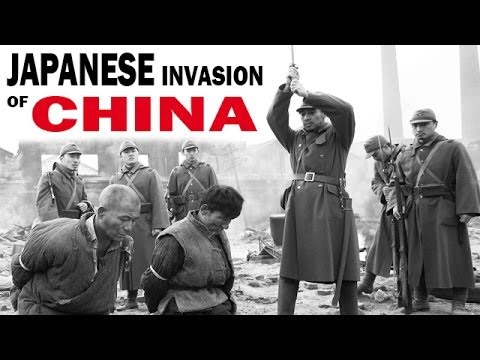 Otherwise, his war was a kind of black hole in family life. But for boys like me, that mattered less than you might expect for a simple reason: we already knew what our fathers had experienced at war. We had seen it at the movies, often with those fathers sitting silently beside us. We had seen John Wayne die on Iwo Jima and war hero Audie Murphy (playing himself) gun down the Germans. We had been with Doolittle’s Raiders over Tokyo for more than 30 seconds, had won back Burma, landed on Omaha beach, and fought island by island across the Pacific toward Japan. And of course, as our “victory culture” assured us we would, we had won.
Otherwise, his war was a kind of black hole in family life. But for boys like me, that mattered less than you might expect for a simple reason: we already knew what our fathers had experienced at war. We had seen it at the movies, often with those fathers sitting silently beside us. We had seen John Wayne die on Iwo Jima and war hero Audie Murphy (playing himself) gun down the Germans. We had been with Doolittle’s Raiders over Tokyo for more than 30 seconds, had won back Burma, landed on Omaha beach, and fought island by island across the Pacific toward Japan. And of course, as our “victory culture” assured us we would, we had won.
It’s hard to emphasize just how formative those war movies were for so many of us, especially if you add in the cheap, all-green sets of World War II toy soldiers with which we reenacted movie versions of our fathers’ war on our floors and, of course, the sticks, and later toy guns, with which we so gloriously shot down “Japs” and “Nazis” in any park or backyard. A whole generation of young Americans would go off to Vietnam stoked on John Wayne & Co. -- on a version of war, that is, that our fathers never told us hadn’t happened.
Ron Kovic, who came back from Vietnam in a wheelchair and wrote the memoir Born on the Fourth of July, recalled the experience vividly: "I think a lot of us went to Vietnam with movie images of John Wayne in our minds. On a reconnaissance patrol, I remember once imagining that I was John Wayne."
Today, former diplomat and whistleblower Peter Van Buren explores the way American war movies, from World War II to today, have produced a remarkably uniform vision of how American war works, one that, in its modern form, is undoubtedly once again lending a helping hand to our latest conflicts. In May 2011, Van Buren arrived at TomDispatch, just back from a 12-month State Department assignment in Iraq embedded with the U.S. military. In his first piece for this site, he reported on the heroic balderdash that embedded reporters -- think, for instance, of Brian Williams -- delivered to the American people about the U.S. military. It was, he wrote then, a kind of “war pornography.” (“Let me tell you that nobody laughed harder at the turgid prose reporters used to describe their lives than the soldiers themselves.”) So think of today’s piece, almost four years later, as a reprise on that theme with an embedded Hollywood stepping in to take the place of all the Brian Williamses of our world. Tom
War Porn
Hollywood and War from World War II to American Sniper
By Peter Van BurenIn the age of the all-volunteer military and an endless stream of war zone losses and ties, it can be hard to keep Homeland enthusiasm up for perpetual war. After all, you don't get a 9/11 every year to refresh those images of the barbarians at the airport departure gates. In the meantime, Americans are clearly finding it difficult to remain emotionally roiled up about our confusing wars in Syria and Iraq, the sputtering one in Afghanistan, and various raids, drone attacks, and minor conflicts elsewhere.
Fortunately, we have just the ticket, one that has been punched again and again for close to a century: Hollywood war movies (to which the Pentagon is always eager to lend a helping hand).American Sniper, which started out with the celebratory tagline “the most lethal sniper in U.S. history” and now has the tagline “the most successful war movie of all time,” is just the latest in a long line of films that have kept Americans on their war game. Think of them as war porn, meant to leave us perpetually hyped up. Now, grab some popcorn and settle back to enjoy the show.
There’s Only One War Movie
Wandering around YouTube recently, I stumbled across some good old government-issue propaganda. It was a video clearly meant to stir American emotions and prepare us for a long struggle against a determined, brutal, and barbaric enemy whose way of life is a challenge to the most basic American values. Here's some of what I learned: our enemy is engaged in a crusade against the West; wants to establish a world government and make all of us bow down before it; fights fanatically, beheads prisoners, and is willing to sacrifice the lives of its followers in inhuman suicide attacks. Though its weapons are modern, its thinking and beliefs are 2,000 years out of date and inscrutable to us.
Of course, you knew there was a trick coming, right? This little U.S. government-produced film wasn’t about the militants of the Islamic State. Made by the U.S. Navy in 1943, its subject was “Our Enemy the Japanese.” Substitute “radical Islam” for “emperor worship,” though, and it still makes a certain propagandistic sense. While the basics may be largely the same (us versus them, good versus evil), modern times do demand something slicker than the video equivalent of an old newsreel. The age of the Internet, with its short attention spans and heightened expectations of cheap thrills, calls for a higher class of war porn, but as with that 1943 film, it remains remarkable how familiar what’s being produced remains.
Like propaganda films and sexual pornography, Hollywood movies about America at war have changed remarkably little over the years. Here's the basic formula, from John Wayne in the World War II-era Sands of Iwo Jima to today's American Sniper:
*American soldiers are good, the enemy bad. Nearly every war movie is going to have a scene in which Americans label the enemy as “savages,” “barbarians,” or “bloodthirsty fanatics,” typically following a “sneak attack” or a suicide bombing. Our country’s goal is to liberate; the enemy's, to conquer. Such a framework prepares us to accept things that wouldn’t otherwise pass muster. Racism naturally gets a bye; as they once were “Japs” (not Japanese), they are now “hajjis” and “ragheads” (not Muslims or Iraqis). It’s beyond question that the ends justify just about any means we might use, from the nuclear obliteration of two cities of almost no military significance to the grimmest sort of torture. In this way, the war film long ago became a moral free-fire zone for its American characters.
*American soldiers believe in God and Country, in “something bigger than themselves,” in something “worth dying for,” but without ever becoming blindly attached to it. The enemy, on the other hand, is blindly devoted to a religion, political faith, or dictator, and it goes without saying (though it’s said) that his God -- whether an emperor, Communism, or Allah -- is evil. As one critic put it back in 2007 with just a tad of hyperbole, “In every movie Hollywood makes, every time an Arab utters the word Allah… something blows up.”
*War films spend no significant time on why those savages might be so intent on going after us. The purpose of American killing, however, is nearly always clearly defined. It's to “save American lives,” those over there and those who won’t die because we don't have to fight them over here. Saving such lives explains American war: in Kathryn Bigelow’s The Hurt Locker, for example, the main character defuses roadside bombs to make Iraq safer for other American soldiers. In the recent World War II-themed Fury, Brad Pitt similarly mows down ranks of Germans to save his comrades. Even torture is justified, as in Zero Dark Thirty, in the cause of saving our lives from their nightmarish schemes. In American Sniper, shooter Chris Kyle focuses on the many American lives he’s saved by shooting Iraqis; his PTSD is, in fact, caused by his having “failed” to have saved even more. Hey, when an American kills in war, he's the one who suffers the most, not that mutilated kid or his grieving mother -- I got nightmares, man! I still see their faces!
*Our soldiers are human beings with emotionally engaging backstories, sweet gals waiting at home, and promising lives ahead of them that might be cut tragically short by an enemy from the gates of hell. The bad guys lack such backstories. They are anonymous fanatics with neither a past worth mentioning nor a future worth imagining. This is usually pretty blunt stuff. Kyle’s nemesis in American Sniper, for instance, wears all black. Thanks to that, you know he’s an insta-villain without the need for further information. And speaking of lack of a backstory, he improbably appears in the film both in the Sunni city of Fallujah and in Sadr City, a Shia neighborhood in Baghdad, apparently so super-bad that his desire to kill Americans overcomes even Iraq's mad sectarianism.
*It is fashionable for our soldiers, having a kind of depth the enemy lacks, to express some regrets, a dollop of introspection, before (or after) they kill. In American Sniper, while back in the U.S. on leave, the protagonist expresses doubts about what he calls his “work.” (No such thoughts are in the book on which the film is based.) Of course, he then goes back to Iraq for three more tours and over two more hours of screen time to amass his 160 “confirmed kills.”
*Another staple of such films is the training montage. Can a young recruit make it? Often he is the Fat Kid who trims down to his killing weight, or the Skinny Kid who muscles up, or the Quiet Kid who emerges bloodthirsty. (This has been a trope of sexual porn films, too: the geeky looking guy, mocked by beautiful women, who turns out to be a superstar in bed.) The link, up front or implied, between sexuality, manhood, and war is a staple of the form. As part of the curious PTSD recovery plan he develops, for example, Kyle volunteers to teach a paraplegic vet in a wheelchair to snipe. After his first decent shot rings home, the man shouts, “I feel like I got my balls back!”
*Our soldiers, anguished souls that they are, have no responsibility for what they do once they’ve been thrown into our wars. No baby-killers need apply in support of America's post-Vietnam, guilt-free mantra, “Hate the war, love the warrior.” In the film First Blood, for example, John Rambo is a Vietnam veteran who returns home a broken man. He finds his war buddy dead from Agent Orange-induced cancer and is persecuted by the very Americans whose freedom he believed he had fought for. Because he was screwed over in The 'Nam, the film gives him a free pass for his homicidal acts, including a two-hour murderous rampage through a Washington State town. The audience is meant to see Rambo as a noble, sympathetic character. He returns for more personal redemption in later films to rescue American prisoners of war left behind in Southeast Asia.
*For war films, ambiguity is a dirty word. Americans always win, even when they lose in an era in which, out in the world, the losses are piling up. And a win is a win, even when its essence is one-sided bullying as in Heartbreak Ridge, the only movie to come out of the ludicrous invasion of Grenada. And a loss is still a win in Black Hawk Down, set amid the disaster of Somalia, which ends with scenes of tired warriors who did the right thing. Argo -- consider it honorary war porn --reduces the debacle of years of U.S. meddling in Iran to a high-fiving hostage rescue. All it takes these days to turn a loss into a win is to zoom in tight enough to ignore defeat. In American Sniper, the disastrous occupation of Iraq is shoved offstage so that more Iraqis can die in Kyle’s sniper scope. In Lone Survivor, a small American “victory” is somehow dredged out of hopeless Afghanistan because an Afghan man takes a break from being droned to save the life of a SEAL.
In sum: gritty, brave, selfless men, stoic women waiting at home, noble wounded warriors, just causes, and the necessity of saving American lives. Against such a lineup, the savage enemy is a crew of sitting ducks who deserve to die. Everything else is just music, narration, and special effects. War pornos, like their oversexed cousins, are all the same movie.
A Fantasy That Can Change Reality
But it's just a movie, right? Your favorite shoot-em-up makes no claims to being a documentary. We all know one American can't gun down 50 bad guys and walk away unscathed, in the same way he can't bed 50 partners without getting an STD. It's just entertainment. So what?
So what do you, or the typical 18-year-old considering military service, actually know about war on entering that movie theater? Don’t underestimate the degree to which such films can help create broad perceptions of what war’s all about and what kind of people fight it. Those lurid on-screen images, updated and reused so repetitively for so many decades, do help create a self-reinforcing, common understanding of what happens “over there,” particularly since what we are shown mirrors what most of us want to believe anyway.
No form of porn is about reality, of course, but that doesn’t mean it can’t create realities all its own. War films have the ability to bring home emotionally a glorious fantasy of America at war, no matter how grim or gritty any of these films may look. War porn can make a young man willing to die before he’s 20. Take my word for it: as a diplomat in Iraq I met young people in uniform suffering from the effects of all this. Such films also make it easier for politicians to sweet talk the public into supporting conflict after conflict, even as sons and daughters continue to return home damaged or dead and despite the country’s near-complete record of geopolitical failures since September 2001. Funny thing: American Sniper was nominated for an Academy Award for best picture as Washington went back to war in Iraq in what you'd have thought would be an unpopular struggle.
Learning From the Exceptions
You can see a lot of war porn and stop with just your toes in the water, thinking you've gone swimming. But eventually you should go into the deep water of the “exceptions,” because only there can you confront the real monsters.
There are indeed exceptions to war porn, but don’t fool yourself, size matters. How many people have seen American Sniper, The Hurt Locker, or Zero Dark Thirty? By comparison, how many saw the anti-war Iraq War film Battle for Haditha, a lightly fictionalized, deeply unsettling drama about an American massacre of innocent men, women, and children in retaliation for a roadside bomb blast?
Timing matters, too, when it comes to the few mainstream exceptions. John Wayne’s The Green Berets, a pro-Vietnam War film, came out in 1968 as that conflict was nearing its bloody peak and resistance at home was growing. (The Green Berets gets a porn bonus star, as the grizzled Wayne persuades a lefty journalist to alter his negative views on the war.) Platoon, with its message of waste and absurdity, had to wait until 1986, more than a decade after the war ended.
In propaganda terms, think of this as controlling the narrative. One version of events dominates all others and creates a reality others can only scramble to refute. The exceptions do, however, reveal much about what we don’t normally see of the true nature of American war. They are uncomfortable for any of us to watch, as well as for military recruiters, parents sending a child off to war, and politicians trolling for public support for the next crusade.
War is not a two-hour-and-12-minute hard-on. War is what happens when the rules break down and, as fear displaces reason, nothing too terrible is a surprise. The real secret of war for those who experience it isn't the visceral knowledge that people can be filthy and horrible, but that you, too, can be filthy and horrible. You don't see much of that on the big screen.
The Long Con
Of course, there are elements of “nothing new” here. The Romans undoubtedly had their version of war porn that involved mocking the Gauls as sub-humans. Yet in twenty-first-century America, where wars are undeclared and Washington dependent on volunteers for its new foreign legion, the need to keep the public engaged and filled with fear over our enemies is perhaps more acute than ever.
So here’s a question: if the core propaganda messages the U.S. government promoted during World War II are nearly identical to those pushed out today about the Islamic State, and if Hollywood’s war films, themselves a particularly high-class form of propaganda, have promoted the same false images of Americans in conflict from 1941 to the present day, what does that tell us? Is it that our varied enemies across nearly three-quarters of a century of conflict are always unbelievably alike, or is it that when America needs a villain, it always goes to the same script?
Peter Van Buren blew the whistle on State Department waste and mismanagement during the Iraqi reconstruction in his first book,We Meant Well: How I Helped Lose the Battle for the Hearts and Minds of the Iraqi People. A Tom Dispatch regular, he writes about current events at his blog, We Meant Well. His latest book isGhosts of Tom Joad: A Story of the #99Percent.
Follow TomDispatch on Twitter and join us on Facebook. Check out the newest Dispatch Book, Rebecca Solnit's Men Explain Things to Me, and Tom Engelhardt's latest book, Shadow Government: Surveillance, Secret Wars, and a Global Security State in a Single-Superpower World.
Copyright 2015 Peter Van Buren
00:05 Publié dans Cinéma, Film | Lien permanent | Commentaires (0) | Tags : hollywood, cinéma, cinéma américain, états-unis, 7ème art |  |
|  del.icio.us |
del.icio.us |  |
|  Digg |
Digg | ![]() Facebook
Facebook



